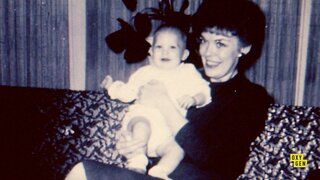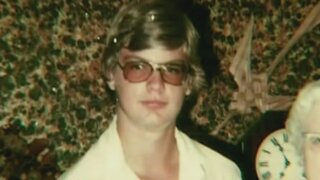Create a free profile to get unlimited access to exclusive videos, breaking news, sweepstakes, and more!
Everything You Need To Know About Jeffrey Dahmer
"Dahmer on Dahmer: A Serial Killer Speaks," an Oxygen documentary special, dives deep into the serial killer's life and murders.

Jeffrey Dahmer is one of America’s most infamous serial killers. Known for eatings parts of some of his victims, he was nicknamed the Cannibal Killer and the Milwaukee Cannibal. His horrendous crimes have inspired multiple books and films including the graphic novel “My Friend Dahmer” which will soon be released as a feature film starring Anne Heche and Disney star Ross Lynch. Oxygen's two-part series “Dahmer on Dahmer: A Serial Killer Speaks" explores new, explosive details and unseen interviews.
THE BASICS
Dahmer raped, killed and dismembered 17 men and boys between 1978 and 1991. His victims were all men, mostly young and gay, and most of them were of color. Many of the victims were not known to be missing by their families. Sadly, quite a few of them were disowned or tossed aside by their own families, according to MSNBC.
CHILDHOOD
Dahmer was born in Milwaukee, Wisconsin, on May 21, 1960, to Lionel and Joyce Dahmer. His parents were educated and affluent. His dad was a chemist and his mother had a master’s degree in counseling according to the Los Angeles Times. His family described him as a healthy, happy child. But until about age four, as reported by Biography. As a four-year-old boy, Dahmer underwent surgery to correct a double hernia. Dahmer became even more withdrawn after his little brother was born. According to “Dahmer on Dahmer” he felt left out and like he wasn’t getting enough attention. Both Dahmer and his father told NBC News that Dahmer became even shyer at age six.
“That was the age when I realized that things weren’t quite right,” Dahmer admitted to NBC’s Stone Phillips. In that same interview Dahmer talked about how his parents’ turbulent marriage affected him: “I lived in my own little fantasy world when things got too heated in the household. It was just my own little world where I had control,” Dahmer told NBC News.
His fascination with dead bodies started early. He played fiddlesticks with animal bones, NBC News reports. Another hobby was storing animal skeletons in bottles of formaldehyde, according to the New York Times.
TEEN YEARS
Dahmer claims that his homicidal and necrophiliac compulsions began around the age of 14, as reported by Biography. The official “My Friend Dahmer” film synopsis described teenage Dahmer as an awkward teen who collected roadkill and obsessed over a man who jogged by his home daily.
At Revere High School, he was considered an outcast. But, at the same time he was oddly popular. He was a class clown who entertained his classmates by mocking a man with cerebral palsy. His acts became known as "Doing a Dahmer,” New York Daily News reports. A group of band geeks even formed The Dahmer Fan Club, headed by Derf Backderf (who later authored “My Friend Dahmer.”)
The club would encourage Dahmer to “perform” his cerebral palsy act in public spots like the mall. Around the same time, the future serial killer began drinking heavily. Dahmer later said he drank to drown out the violent and sexual thoughts. In an interview with NBC News, Dahmer said, “I think at age 14 or 15, I started having thoughts of violence intermingled with sex and it just got worse and worse.”
His classmates could often smell booze on him and he became known for drinking Scotch in class, according to the New York Times. Despite his alcoholism, Derf Backderf and other classmates found Dahmer to be hilarious
“He was enjoying himself quite a bit,” Backderf said of his classmate in an interview with WKSU. “It was very likely, sad to say, the happiest time of his life because he was the center of attention and actually had friends.”
Dahmer was shy with occasional bizarre outbursts, but he was also very charismatic. In fact, while on a class trip to Washington D.C. Dahmer called the White House, with confidence, and managed to get clearance for him and two classmates to visit the vice president’s office. Backderf wrote about that incident in his graphic novel.
HIS MURDERS
Dahmer killed for the first time in the summer of 1978, two weeks after he graduated from high school. He was 18 years old. His father was away on business and he was home alone. He picked up a hitchhiker named Steven Hicks and brought him back to the home to drink. The two drank beer together but eventually the man tried to leave. Dahmer didn’t like that, so he hit him over the head with a ten pound dumbbell, according to Crime Museum. He then strangled Hicks to death with the barbell, according to Biography. Dahmer dismembered Hicks’ corpse and packed his parts into plastic bags which he buried behind his parent’s home. Later, he exhumed the human remains and crushed the bones with a sledgehammer before scattering the bits across a ravine, Biography reports. Dahmer later admitted to the murder, and said he killed him because he “didn’t want him to leave.”
It would be nine years before Dahmer killed again. But, he didn’t stay out of trouble. In both 1982 and 1986, he was arrested for indecent exposure, according to Crime Museum. In 1986, two boys accused him of masturbating in front of them. Dahmer was also arrested for drugging, fondling and photographing a 13-year-old boy according to the Chicago Tribune. He was required to register as a sex offender for that incident.
Steven Tuomi was Dahmer’s second victim. He killed Tuomi in September of 1987 in a hotel, according to the Wisconsin Gazette, after picking him up from a bar and drugging him. Dahmer later claimed that he had no memory of that murder and that he didn’t intend to kill him. Dahmer killed additional two men in 1988 and one additional person in 1989. He picked up both victims at gay bars.
During some of his later murders, he had sex with the bodies and preserved many of the victims’ body parts. He admitted in an MSNBC interview that when he killed his victims, it felt like they became a permanent part of Dahmer.
ARREST
One of Dahmer’s victims managed to escape death on July 22, 1991. Tracy Edwards, 32, was picked up by Milwaukee police officers after they spotted him on the street, about a block from Dahmer’s apartment with a handcuff hanging off one of his wrists. According to Biography, Edwards told the cops that a "weird dude" drugged, restrained him and threatened him with a knife. He brought the officers to Dahmer's apartment, according to radio show Rover’s Morning Glory. Reportedly, Dahmer calmly offered to get the keys for the handcuffs. But then police went into his bedroom to look for the knife. While seeking out the weapon, the cops found something much, much more disturbing: polaroid photographs of dismembered bodies. Subsequently, Dahmer was arrested but not before Dahmer attempted to fight the police, according to Rover’s Morning Glory.
Soon the cops found a human head in his fridge. Homicide detective Patrick Kennedy recounted the chilling find on the radio show Rover’s Morning Glory, “The word surreal is used quite a bit. But it really was surreal here. … When I looked into the refrigerator it was a clean and empty refrigerator except for an open box of arm and hammer soda in the back and this box in the middle containing this freshly severed, bloodless, human head. It was a black male with his eyes and mouth open with an expression of almost excitement or surprise so when I saw it, I can say that I had been a police officer for many years and seen some horrendous things …. But I can tell you that the sight was so weird that everything in my whole being told me ‘man you need to get the hell out of here. ”
He called it the most disturbing sight he had ever seen.
“We found eleven other skulls and heads in the freezers and his closet but this one he kept fresh because he said this was the most beautiful man that he had ever met and he wanted to keep him fresh so he would take him out and make love to him and fondle him and touch him,” Kennedy told Rover’s Morning Glory. He added that Dahmer would kill and have oral sex with all his frozen heads. Also found in Dahmer’s home, according to Biography: jars full of humans’ genitalia and even more Polaroid photos of Dahmer’s victims.
“He showed remorse early on in the confession,” Kennedy told Rover’s Morning Glory. “He was crying mostly because he was concerned about his grandmother and his father and his mother and his step mother and his brother, what they would think of him when they found out the horrendous things he had done. He was remorseful of the bodies of the people that he killed and their families but at the time he was so caught up in this hedonistic pursuit of his pleasures. He found great pleasure in lying with a dead body. He found great pleasure in having sex with a dead body. He found great pleasure in cutting open and having sex with the internal organs of a dead body. His love for his pleasure overcame his knowledge of knowing what he was doing as wrong.”
In February of 1992, Dahmer was sentenced to 15 consecutive life sentences in prison. His time in prison was mostly spent trolling his peers. According to the New York Post, Dahmer's former prison minister Roy Ratcliff said Dahmer enjoyed making light of his cannibalistic acts.
"If he saw a guard that was nervous and standing near enough to hear him, he would say, 'I bite,'" Ratcliff told the New York Post. "Usually the guard would jump away and that would make Jeff laugh."
On November 28, 1994, just two years after his sentencing, Dahmer was beaten to death by his fellow inmate Christopher Scarver at the Columbia CorrectionalInstitution. Scarver said he killed Dahmer because of his creepy sense of humor. The serial killer turned prison food into fake limbs which he covered in “blood” aka ketchup, the New York Post reports. Dahmer left those “Fake limbs” around the prison to mess with fellow inmates and staff.
"He crossed the line with some people -- prisoners, prison staff," Scarver told the New York Post. "Some people who are in prison are repentant -- but he was not one of them."
[Photo: NBC News]



















